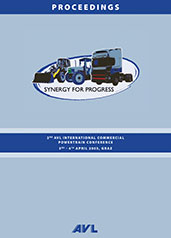Technical Paper
110 Ton Payload on Two Axles with Hydro-Mechanical Drive
1966-02-01
660237
Late developments in tires and in lightweight, high horsepower engines and transmissions have enabled the earthmoving and mining industry equipment manufacturers to design and produce several types of preproduction 100-ton capacity trucks. A straight-forward approach to the design of a 110-ton end dump truck on two axles with a hydro-mechanical drive was followed by KW-Dart Truck Co. to produce a low cost per ton-mile vehicle.


